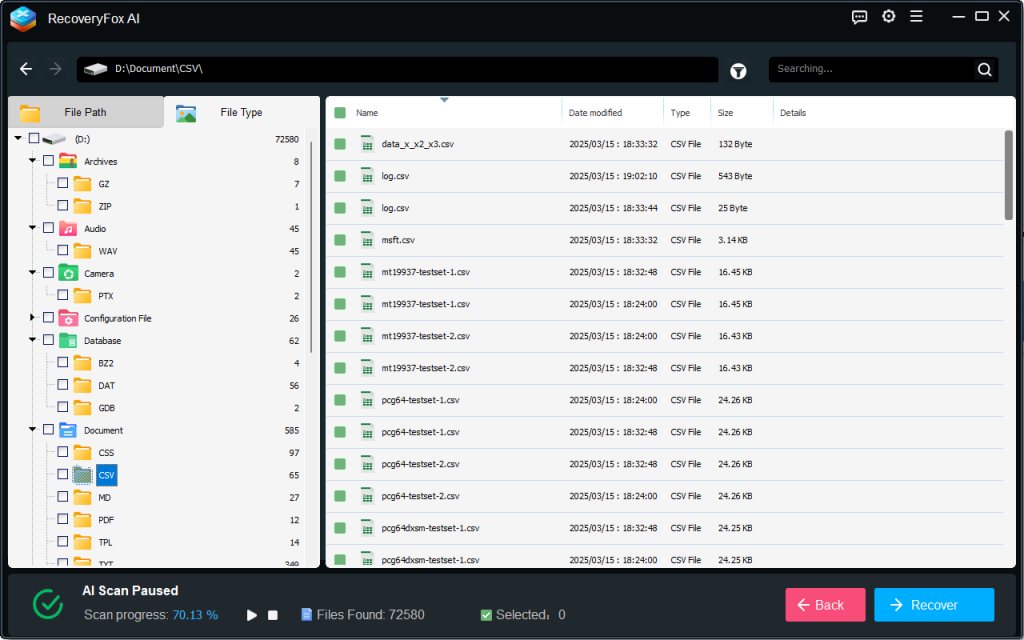Table of Contents
Why Losing a .txt File Can Sting
It might just be plain text, but .txt files often carry essential info—notes, logs, to‑do lists, snippets of code. Losing one can feel small on the surface, yet the jitter of frustration when you realize it’s gone is very real. You don’t always need a trove of fancy files; even a lost .txt can derail a day. System crashes, accidental Shift+Delete, device formatting—they all have the potential to make us pinch the bridge of our nose and mutter, “Seriously?”
That stress—this guide is for that moment. The weight of lost work, the nagging regret of not having backed up, and the rush to fix everything—I’ve been there. It’s not about dramatics; it’s simply real-life annoyance that turns a quiet afternoon into a scramble.

Introducing RecoveryFox AI: Your .txt Guardian Angel
RecoveryFox AI, from WonderFox, is a Windows‑only data recovery tool that uses artificial intelligence to scan and rebuild lost data fragments. It supports mainstream file systems like NTFS, exFAT, and FAT32, and works with internal HDDs, SSDs, USB drives, SD cards—even formatted or corrupted partitions
Its standout features include:
- Dual-scan modes: a Quick Scan for recently deleted files and an AI Scan for more thorough recovery of older or fragmented files.
- Real-time previews, letting you check the content of a .txt before committing to recovery.
- Non-destructive operations, meaning it reads rather than overwrites existing data, reducing risk.
In independent reviews, it scores around 4 out of 5 with a reported 98% success rate in recovering lost files. And despite its AI‑driven depth, reviewers note its interface remains clean and beginner‑friendly.
My Take: Why This Tool Resonates
I once lost a .txt jotting down key steps for a workshop. It wasn’t huge, but the stress of reconstructing it manually was real. When I tried RecoveryFox AI, I found it picked up nearly every line—formatting, bullet points, even the rough “draft mode” notes. It felt like someone retrieved my thoughts from thin air. That sense of relief? It wasn’t just about the text—it was about regaining control.
Step‑by‑Step: Recovering .txt Files with RecoveryFox AI
Here’s how you can do it—let’s walk through as if I’m beside you, reassuring, with a cup of tea.
1. Download & Install
Downlaod RecoveryFox AI from https://www.wonderfoxrecovery.com/ and install it on your PC.
2. Open the Program
Launch it after installation. You’ll be greeted by a simple three-step wizard: Select → Scan → Recover.
3. Select the Drive or Location
Pick where your .txt was stored—could be the C: drive, a USB stick, SD card.
4. Run the Scan
- Start with Quick Scan—good for recent deletes.
- Follow with AI Scan to dig deeper; this one takes longer but intelligently reconstructs fragments, boosting chances for older files.
5. Filter & Preview .txt Files
- After scanning, filter results to show only .txt (or search by “.txt”).
- Click on a file to preview—see its text content live before you recover.

6. Select & Recover
- Choose the .txt (or multiple).
- Hit Recover, then select a different destination drive or folder to avoid overwriting.
- Click OK, and let RecoveryFox AI restore your precious file.
7. Verify & Archive
- Open the recovered .txt to ensure it’s fully intact.
- Immediately copy it to a safe location—cloud, external disk, backup folder.
Final Thoughts
Losing a .txt file might seem small—but it’s those little things that ripple into bigger frustrations. With RecoveryFox AI, you get a blend of AI‑powered magic and simplicity. From “I think I deleted it” to “here it is again,” it’s a humane tech tool—one that recognizes we’re not just recovering data but retrieving hours of thinking, work, and peace of mind.
So the next time delete lands that sinking feeling, trust RecoveryFox AI to help you breathe easier.
Leave a Reply
You must be logged in to post a comment.